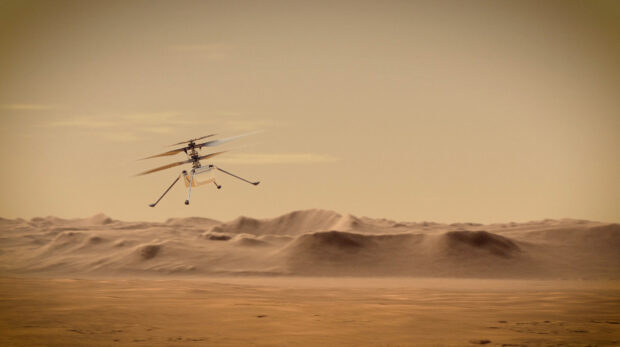NASA announces end of history-making Mars helicopter mission

WASHINGTON — NASA said Thursday that its miniature robot helicopter Ingenuity, which in 2021 became the first aircraft to achieve powered flight on another planet, can no longer fly, ending a mission on Mars that lasted far longer than originally planned.
“It is bittersweet that I must announce that Ingenuity, the ‘little helicopter that could’ – and it kept saying, ‘I think I can, I think I can’ – well, it has now taken its last flight on Mars,” NASA Administrator Bill Nelson said in a video posted on social media.
READ: NASA’s Mars helicopter succeeds in historic first flight
The US space agency said Ingenuity made an “emergency landing” during its second-to-last flight. During its last flight, the craft on January 18 lost contact with Perseverance, the rover from which Ingenuity deployed in 2021, when it was flying about 3 feet (1 meter) above the ground while descending to land, NASA added.
Engineers at NASA’s Jet Propulsion Laboratory restored contact with Ingenuity the next day, and imagery taken days later showed damage to one of its carbon fiber rotorblades, the space agency said. An image released by NASA that was taken by Ingenuity’s onboard camera captured the aircraft’s shadow on the Martian surface, appearing to show one of its rotorblades broken.
“We’re investigating the possibility that the blade struck the ground,” Nelson said.
READ: After six months on Mars, Nasa’s tiny copter is still flying high
Perseverance, which carried Ingenuity on its belly, landed on the Martian surface in February 2021.
What began as a planned 30-day mission to demonstrate five short flights on Mars turned into a nearly three-year scientific endeavor involving 72 flights. Ingenuity flew a combined distance in its various flights that was 14 times farther than originally planned, NASA said.
Following Ingenuity’s debut flight in April 2021 – buzzing above the surface of Mars for 39 seconds – NASA officials hailed the achievement by the 4-pound (1.8-kg) solar-powered aircraft as one that would help pave the way for a new mode of aerial exploration on the Red Planet and other destinations in the solar system, such as Venus and Saturn’s moon Titan.
Ingenuity resembles a box with four legs and a twin-rotor parasol, designed for flight in the thin Martian atmosphere that requires more power than similar craft on Earth.
READ: NASA rover soon to make oxygen for future astronauts
On that initial flight, it climbed as programmed to a height of 10 feet (3 meters) above the surface, then hovered in place while pivoting 96 degrees before making a safe touchdown. NASA compared it to the Wright Brothers’ 1903 historic first controlled flight of their motor-driven airplane near Kitty Hawk, North Carolina.
The helicopter’s success in early demonstration flights earned it a more productive role on Mars, helping scout location targets for Perseverance with its tiny onboard camera. The craft survived almost 1,000 Martian days, NASA said, which included the planet’s frigid winter seasons.
Engineers will run final tests on Ingenuity and download remaining images from its onboard computer, NASA said. Perseverance is currently too far away to photograph Ingenuity’s final resting site, it added.